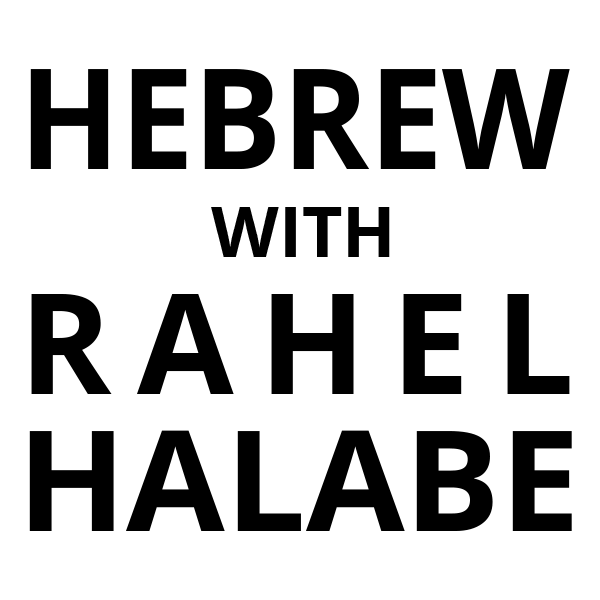– The Hinneh program is designed for about 100-150 classroom hours (75-100 hours for Volume I, 25-50 hours for Volume II).
– It is highly recommended that, in order to help students appreciate and internalize the sound and rhythm of Hebrew, all passages presented be read aloud in class. They are thus modeled by the instructor, and followed by the students, before analyzing, translating, correcting or discussing. Singing is another excellent way to improve on reading skills and help memorize verses. A good number of verses offered throughout the textbook have known melodies. Teachers are encouraged to introduce these to the class, and sing them together.
– Homework is essential, and is expected to take at least the same number of hours as in the classroom. Instructors have the option to select homework assignments from the wide range of exercises offered, depending on their course objectives, time framework, and class level. They may assign only part of what is offered, or require more exercises of a similar nature. It is helpful if passages not chosen as translation exercises, are still read with the translation offered in the Answer Key.
– Simple conversations offered (mostly in the first half of Volume I) as in-class activities are meant to liven up the atmosphere and help students internalize new vocabulary and grammar. Some instructors may prefer to simply have students read the conversations aloud in pairs or as a group.
– Also optional but very helpful, especially in the first half of Volume I, is the use of Biblical art (For example: Gustave Dore’s illustrations, which can now be easily found on the web).
– Context is helpful in understanding and translating Hebrew passages. Short comments are often offered for this purpose. Instructors may want to add to these comments and expand more upon the background story.
– Due to pedagogical considerations, materials and explanations in this textbook offer the students ‘the truth’, but not necessarily, the ‘whole truth’. Therefore, meticulous linguistic details are usually not presented. Instructors may be tempted at various points to further elaborate and expand on the grammar offered. Try to minimize that. Always consider the practical use of such information for your students at this introductory stage.
– Memorizing basic paradigms is certainly helpful in internalizing the various forms. The same is true about memorizing vocabulary. However, the main objective is the ability to read a text with comprehension, and not speak or write Biblical Hebrew. The expectation for students at this level should be the ability to recognize words and forms and their components and not to produce them. Thus, I recommend not requiring students to reproduce paradigms, translate sentences from English into Hebrew, assign vowels to paradigms, or texts etc.
– When tested, students should be allowed to write their translation exams while using the Tool Box and Lexicon. Thus, they will be able to demonstrate their ability to integrate their knowledge and skills, as in independent work, in order to interpret a Biblical Hebrew text. Quizzes, however, which test students’ familiarity with the most frequently occurring vocabulary (e.g. parsing and translating lists of declined nouns, or conjugated verbs) with no context, should be written without the above aids.
– The framework of this textbook does not allow for longer Biblical passages to be offered. Instructors can pick such texts, e.g. a story or part of it, prepare it with partial translation for parts beyond the class level, and add suitable parsing charts (to see examples, click on What do Students Achieve through Hinneh (in 4 stages) .
– While studying the verb system, from beginning to end, it is helpful if students have in front of them a clear illustration of, or the actual paradigms of, all stems, as well as those of the major Qal root groups (copied on different color paper as suggested, in the form of a poster, Power Point presentations, etc.) This should be visible right from the beginning of studying the verbs with the Qal prefix and suffix forms, ‘strong’ and ‘weak’ root groups (Vol. I, Lessons 24-44), through the presentation of the rest of the Qal forms (Vol. II, Lessons 1-10), and the completion of all stems (Vol. II, Lessons 11-23). Similar to what is illustrated in Tool No. 10, the repeated referral to the Hebrew verb system allows the instructor to zoom in and out of what is discussed in any particular lesson, pointing to other root groups and stems, and drawing attention to similarities and differences.
– Scattered throughout Hinneh are comments, that you may find overly repetitive. Please do not dismiss them as such. The ongoing ‘hammering’ of students with suggestions, expectations and reminders (especially when imparting the verb in both Volumes I & II) is important in enhancing both their understanding of patterns and their proficiency. Do not hesitate to do the same.
– Keep consulting this website, which will be continually updated, for further suggestions and tips.
Do not hesitate to contact me with any inquiries, suggestions, corrections etc. related to Hinneh.
I will be happy to support instructors, as well as supply them with some extra practice material, and exams.
Hinneh is a textbook that works well for a wide range objectives, from the academic/yeshivah/seminary courses to classes offered in the various congregations. If needed, please contact me to discuss possible workshops on the use of Hinneh for your specific needs.
